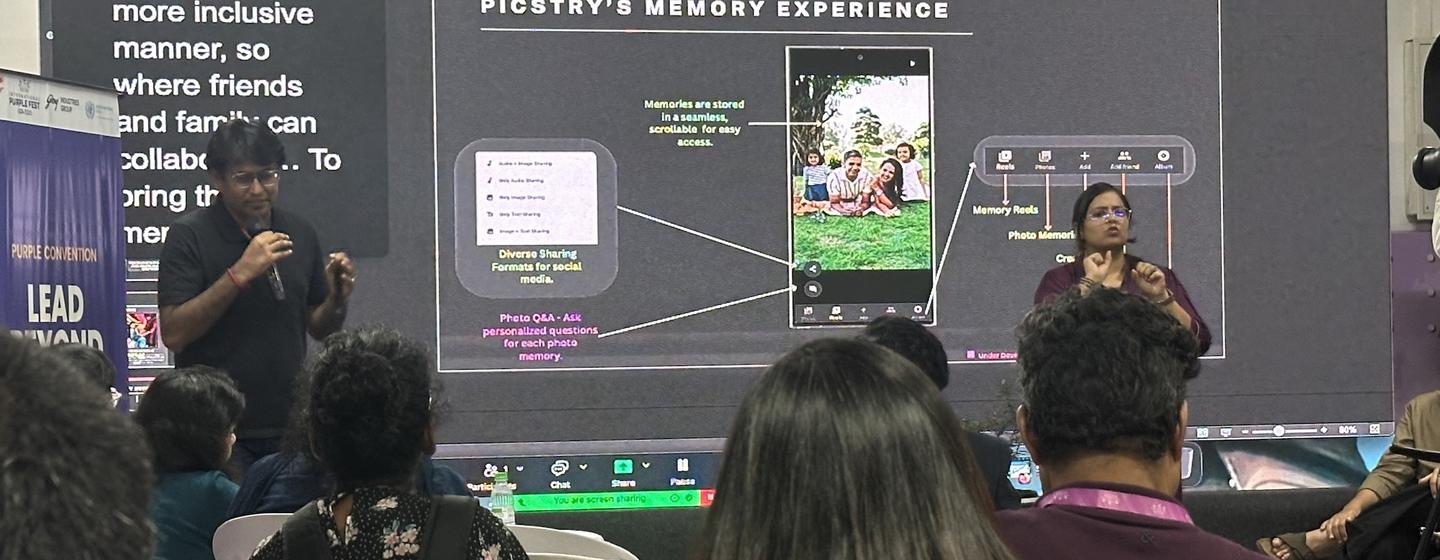
When designed with lived experiences at its core, AI tools such as conversational screen readers, adaptive dashboards, and real-time captioning do more than just eliminate barriers; they catalyze possibility. These technologies transform mere access into genuine agency, enabling individuals to learn, lead, and contribute on their own terms.
However, to realize this potential, we must be vigilant against the perils of embedding existing biases within these systems. Surashree Rahane, a person with disabilities who embodies resilience, navigated her early life with club foot and polymelia, conditions that shaped her understanding of mobility and autonomy. She grew up in an environment where disability was normalized, not stigmatized; and her mentors instilled in her the belief that leadership is fundamentally about inclusion. “My mentors always said, don’t just seek jobs, create them,” Rahane asserts, illustrating the transformative power of proactive leadership.
Today, as the founder and CEO of Yearbook Canvas, a platform focused on crafting digital yearbooks for academic institutions, Rahane has witnessed firsthand the structural barriers that persist in our society. These obstacles—be it inaccessible infrastructure, biased funding systems, or rigid educational frameworks—are remnants of an inequitable system that continually marginalizes disabled individuals. Her current collaboration with Newton School of Technology in New Delhi highlights her commitment to inclusive academic design and the development of AI-based learning tools that adapt to diverse student learning paces. “AI can democratize access to education,” she emphasizes, “but only if we teach it to understand diverse learners. Otherwise, we risk building a shinier version of the same old bias.” This warning is critical; without conscious effort, the advancements in AI can simply perpetuate existing injustices rather than dismantle them.
AI is often heralded as “the great equalizer.” This perspective is echoed by Prateek Madhav, CEO of AssisTech Foundation (ATF), who highlights that while society frets over AI’s potential to displace jobs, for people with disabilities, AI is a force that creates opportunities. The reality is that technology continues to break down barriers that once seemed insurmountable. Ketan Kothari, a consultant at Xavier’s Resource Centre for the Visually Challenged in Mumbai, illustrates this transformation. “Today I can format a document, access meetings with live captions, and even generate visual descriptions through apps,” he shares. “AI has turned imagination into function.” This is not mere rhetoric—it is a testament to AI’s capacity to empower individuals, turning abstract possibilities into concrete realities.
Yet, the narrative of inclusion does not belong to any single nation or community; it is a universal imperative that transcends borders. As Tshering Dema from the UN Development Coordination Office points out, “this is not a single-country story – it’s a global transition. Inclusion isn’t only about laws or infrastructure; it’s about mindset and shared design.” We must recognize that the future of work, and indeed, the future of society, must be constructed not just for people with disabilities but with them. Their insights are not ancillary; they are integral to the design of solutions that reflect the diversity of human experience.
In our pursuit of a fairer future, we are called to challenge entrenched systems that perpetuate inequality. The integration of AI in the lives of persons with disabilities is not merely a technological upgrade; it is a moral obligation. As we move forward, we must ensure that these technologies reflect the values of social justice, equality, and human rights. The path ahead requires collaboration, empathy, and a commitment to dismantling the barriers that have historically marginalized individuals with disabilities. Only then can we create a truly inclusive society that honors and uplifts every voice.
This article highlights the importance of in Disability Justice.


